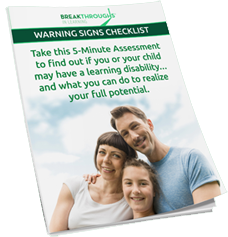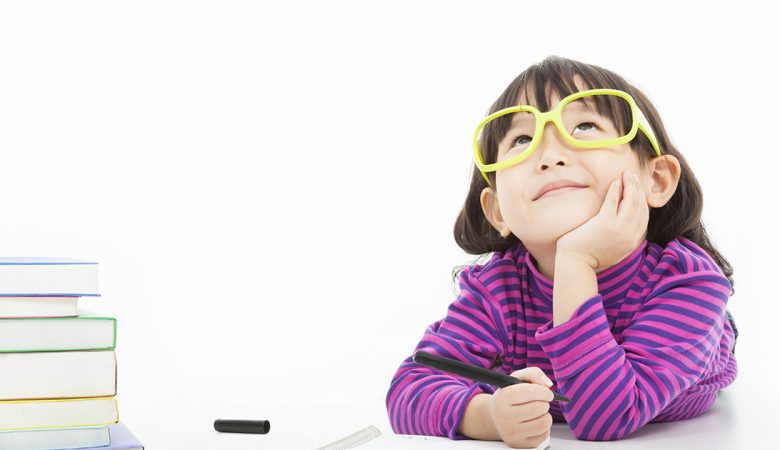We have been discussing how reading can be negatively affected when children struggle with poor eye tracking or visual discrimination. Today, as promised, we have compiled a list of activities that will support the growth and development of visual skills. I will subdivide them into the areas we have already discussed earlier this month.
Fusion is the ability for your eyes to track objects coming towards you, so some activities to develop and improve this ability would be:
- Playing with marbles on the floor. Sit opposite your child and roll a large marble back and forth. Make sure your child is following with their eyes. Be careful to keep the movements of the ball slow and gentle.
- Eye Q is a computer program we use frequently at our office. It includes activities for both fusion and pursuit.
- Playing catch with a ball is another great activity that helps your child track objects that are coming towards him/her.
- Frisbee is an alternative to playing catch with a ball.
Pursuit and saccade are the ability to track objects left and right. Developmentally, we track right to left initially and so as a predominately English speaking and reading country, we need to train our children to reverse this tendency in order to read. Activities to develop and improve Pursuit and saccade would be:
- Move a colourful HotWheels Car or Truck along a path left to right in front of your child. My husband would recommend that it be a 5.0 Litre Mustang 😉 Encourage your child to watch with their eyes and monitor their ability from the position of facing them. Move slow enough that they can follow easily, eventually going a little faster.
- As mentioned with Fusion, Eye Q is a great resource to develop both areas.
- Puzzlemania are books that have many different types of brain teasers and puzzle activities. To develop pursuit we encourage you to focus on activities that ask you to find hidden objects.The following link has Free Hidden Pictures from Highlights Magazine which you can print off for your child.
- Encourage your child to follow moving objects. For example you can follow an airplane with your eyes, a car driving past your home, or a flying baseball.
- Place two objects on the table. Keep your head stable and move your eyes quickly from the object on the left to object on right.
Visual discrimination is a judgment skill that quickly sees the small visual details in things. Without this brain skill we may have a problem seeing the differences and similarities in shapes, colours, sizes, patterns, letters, positions and orientations. You can imagine how this would make learning to read very difficult. Some activities to develop this brain skill are:
- Puzzles are great ways to develop visual discrimination. Please consider your child’s ability when finding puzzles. Allow your child 5-10 minutes to complete the puzzle. They do not have to be 1000 piece puzzles to encourage growth in this area. We suggest 16 piece block puzzles (especially great if you can find one with coloured borders) and 24-60 piece floor puzzles. The puzzle doesn’t have to be completed for the exercise to take place.
- As mentioned before, Puzzlemania covers a multiple of brain skills. To develop the area of visual discrimination we suggest that you find Same or Different Activities. Allow your child 5 minutes to find the differences. Do not worry about how many they find. Simply give them the opportunity to use this specific brain skill. Puzzlemania books are available from Highlights.com but search your favourite used book and magazine place first, or ask other parents if they are finished using their Puzzlemania collection.
- Checkers is a great interactive game that allows them to use their judgment of what move to take and helps them to see and understand the results.
- Cutting and Tracing with Templates. Again allow your child a few minutes a day with this activity.
Remember that Breakthroughs is here to help. These activities are a great starting point but their effect will be limited based on the severity of the problem your child or student is facing. Contact us if you need further assistance.
About the Author
From an early age Matthew loved to talk, and now he gets paid to do just that.
Having grown up with Learning Disabilities and overcome them, Breakthroughs is an opportunity for him to give back. Now Matthew is an Educational Therapist with over 20,000 hours of experience working with children and adults with learning challenges.
When not in the office Matthew can be found seeking adventure with his wife and children, preferably on a mountain or in a kayak.
Like These Articles?
Subscribe to our newsletter and receive regular articles and resources to help you or your child perform better at school, home or work.
suscribe now
Subscribe to our newsletter and
Receive regular articles and resources to help you or your child perform better at school, home or work.
Post Comment


Post Your Comment Below